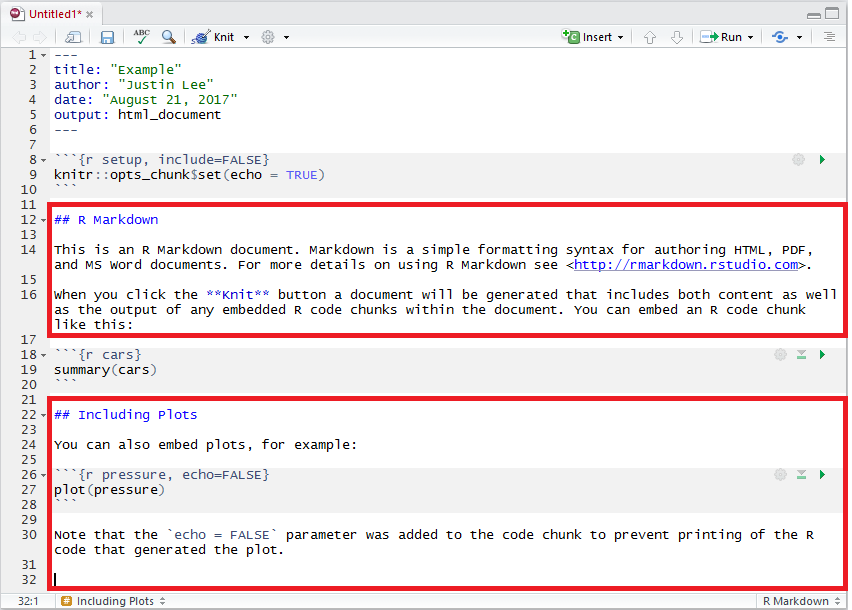

You can choose between HTML, PDF, and Word. Then a new window will pop up where you can fill out the title of your new document, the author (um, your name? 😉), and the output format. The first thing you’ll do after opening RStudio is go to File » New File » R Markdown. Now that you have the basic software and packages installed, you can get started with using R Markdown!
#BOLD RMARKDOWN UPDATE#
You’ll only need to do this once for your computer (at least until the next time you update R).

To do that you can run install.packages("rmarkdown") and install.packages("knitr").
#BOLD RMARKDOWN INSTALL#
You’ll also have to install two packages: rmarkdown and knitr.
#BOLD RMARKDOWN HOW TO#
These resources show you how to get started with R and RStudio. If you need help with that, you can check out my blog post and lessons one, two, and three of my online course. To use R Markdown, you’ll need to have R and RStudio already installed. I’ll cover the rest of the video in part two next week. This post covers material in the video up to 35:35. You can also follow along with this blog post in video format if you click on the image below. Here, you’ll learn how to create R Markdown documents with different types of content, and in part two I’ll go into how you can use it for learning R. This tutorial is the first post of a two-part series on R Markdown. It allows you to make tutorials like this oneįinally, you can use it for learning R by helping you keep track of your notes and thinking process all while creating a custom reference document (more on this in part two!) It helps with accountability, because all your code and the exact corresponding outputs are knit together into the final document It’s great for reproducibility, where you can explain your analyses alongside your code and output so someone can follow along and replicate your work R Markdown is useful for several reasons:

You could create a pipeline that starts with your R script, creates the intermediate Rmd file using spin, and then uses rmarkdown::render to create the final product.Like_this <- c( "isn't", "this", "neat?")
#BOLD RMARKDOWN PDF#
Why would you want to convert R to RMarkdown when it renders to HTML or Word or PDF automatically (within RStudio), you ask? Because spin uses knit2html/ knit2pdf/ knit for rendering the documents, rather than rmarkdown::render, which uses the power of Pandoc and hence has richer options in terms of formatting. R to RMarkdown : knitr::spin(fname, knit = FALSE, format = "Rmd").RMarkdown to R : knitr::purl(fname, documentation = 2).It turns out we can flip back and forth between the two complementary formats through functions in knitr, where fname denotes the respecive source file: The R script is much nicer for developing code, but it would be nice to get a nice document at the end of development without too much hassle. RMarkdown is nice when you want to create a final document to report your analysis, but can be burdensome when you’re developing code.

Respect to format, since the RMarkdown document is primarily a text (Markdown) document with code chunks, and the R script is primarily a code document with text chunks. In effect, this “spinnable” R script is the complement of a RMarkdown document with


 0 kommentar(er)
0 kommentar(er)
